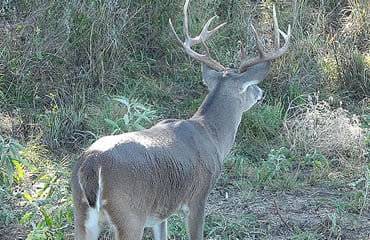This is a great time to get a better read on local deer behavior.
One trait shared by whitetails and humans is we're creatures of habit. If something works and we're happy, we're not likely to change.
This means that, barring significant habitat changes, next year's deer will likely use the same trails, bedding areas, staging areas and breeding grounds as they did this past fall.
January provides an excellent opportunity to identify exactly how whitetails go about their lives on a given tract. When turkey season rolls around, foliage will once again obscure sign that stands out now. In January, however, rubs and scrapes are still fresh, and trails are easily seen and tracked. And if you want to scout a bedding area and see exactly how deer come and go, January is the time to venture into their sanctuaries.
It's helpful to use a map or a smart phone app to take note of your findings. A visual reference that brings all your information together will allow you to get a much better handle on why deer are doing what they're doing, and it will help you identify some likely places to hang a stand.
While whitetails are creatures of habit, nothing is etched in stone. They will shift travel routes from year to year, often based on food. The unpredictable nature of acorn crops means whitetails will move to find the best sources of mast. Farmers rotating crops also can have a significant effect on deer movement. It's normal to see completely different travel patterns in years when a farm is planted in soybeans compared to when it's planted in corn, for example.
The longer you hunt a property, the more you can document how deer behave based on given conditions. This allows you to then make better predictions on what they'll do as you head to this woods this fall.
To sum up, head out in January to identify travel routes and other areas of concentrated deer activity. Head out again in late summer to compare current conditions to previous seasons and determine if last year's plan will work again, or if you'll need to make some changes.
One important word of caution: If you live in a state that experiences harsh winters, avoid pushing deer when conditions are bad, or when you've had heavy icy or snow. Whitetails in northern climates sometimes struggle to make it through severe winters, and bumping them from sheltered areas burns critical calories at a time when they need them most and food is scarce.
Read Recent Tip of the Week:• Silence is Golden: There’s a good reason the TV pros whisper after taking a shot.




.png)